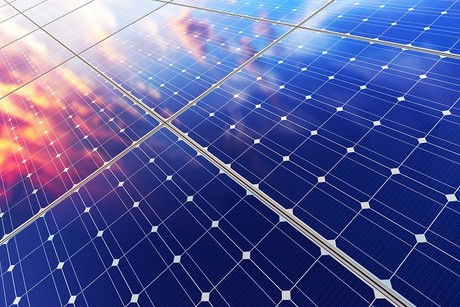Solar cell manufacturing myth busted

European researchers have busted a 20-year-old myth surrounding solar cell production, finding that previous assumptions about the chemical processes involved are, in fact, inaccurate.
Photovoltaic solar panels absorb incoming sunlight, which excites electrons — sending them off in a predefined direction in order to generate an electric current that can drive motors or light a bulb. The cells are manufactured in a complex process where several chemical elements are deposited on a glass substrate, typically by evaporation. Thereby, a solar cell ‘grows’, layer by layer.
In the past, scientists discovered by accident that the efficiency of one type of solar cell technology improves vastly if they add sodium to the light-absorbing layer. At the same time, they observed that the sodium impacts the growth of this layer and the interaction of the other chemical elements; namely, that it inhibits the mixing of gallium and indium, which leads to less homogenous layers and thus impairs the results. Therefore, scientists and manufacturers have until now believed that the ideal way to produce a solar cell was to only add the sodium after the growth process was concluded.
By using a different approach, researchers from the University of Luxembourg, along with four international partners, have shown that the truth is more nuanced. While conventionally the light-absorbing layer is made up of thousands of individual grains, the research group chose a more demanding fabrication strategy and grew the layer as a single grain.
“Essentially, in this work we show that if the absorber is made of only one grain, adding a small amount of sodium helps to homogenise the distribution of the elements,” said principal investigator Diego Colombara, now based at the International Iberian Nanotechnology Laboratory. “This is very surprising, because more than 20 years of previous research have consistently shown the opposite effect on absorbers made of many grains.”

The researchers thus conclude that the sodium has a dual effect: it homogenises the elements inside each grain but it slows down homogenisation in the interplay between grains. The results of their study have been published in the journal Nature Communications.
“This gives us the opportunity to rethink how we produce solar cells,” said study co-author Dr Phillip Dale, head of the research group at the University of Luxembourg’s Laboratory for Energy Materials. “In the future, these insights might lead to improvements in the manufacturing process.”
Predictive AI model enhances solid-state battery design
ECU researchers are working on ways to make solid-state batteries more reliable with the help of...
Boosting performance of aqueous zinc–iodine batteries
Engineers from the University of Adelaide have enhanced aqueous zinc–iodine batteries using...
Sodium-ion battery breakthrough boosts energy storage
Scientists have discovered that leaving water inside a key material, rather than removing it,...





